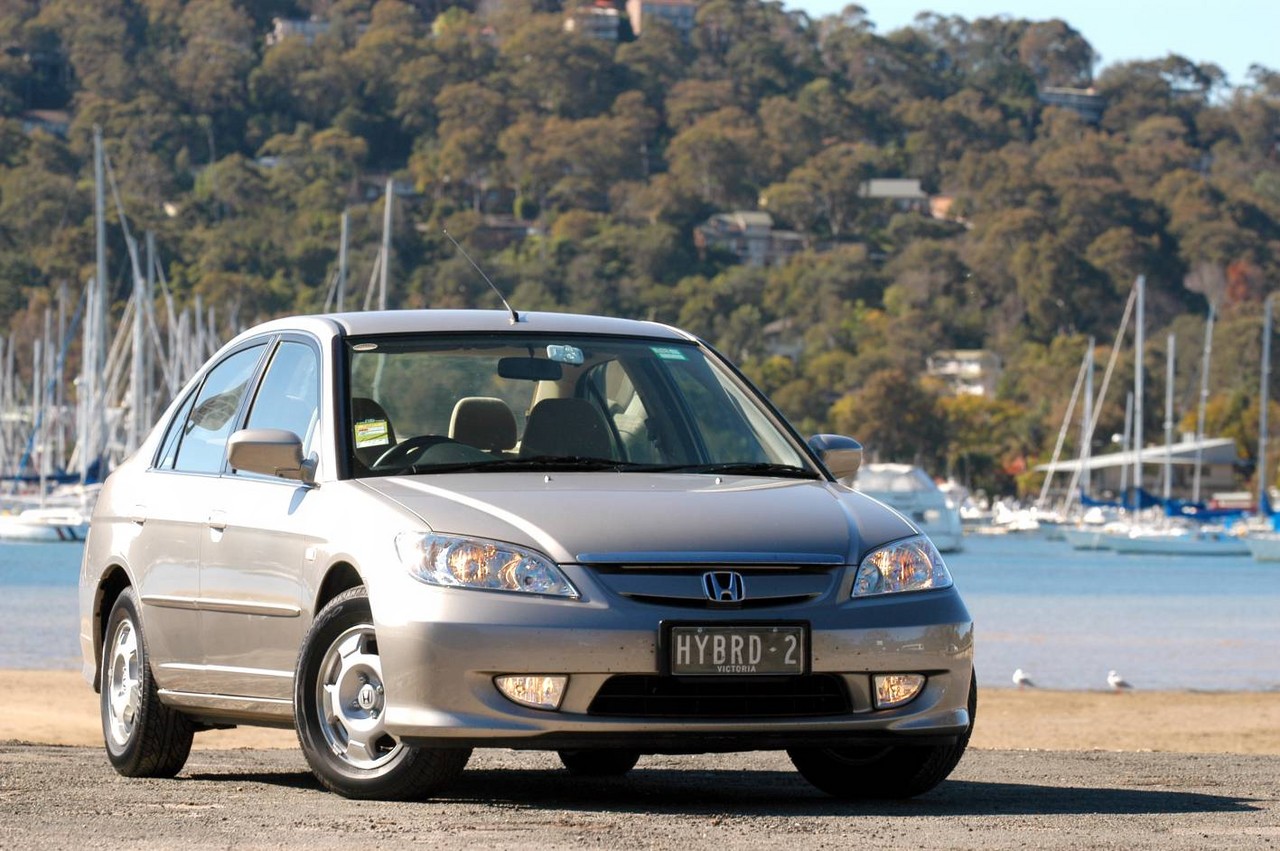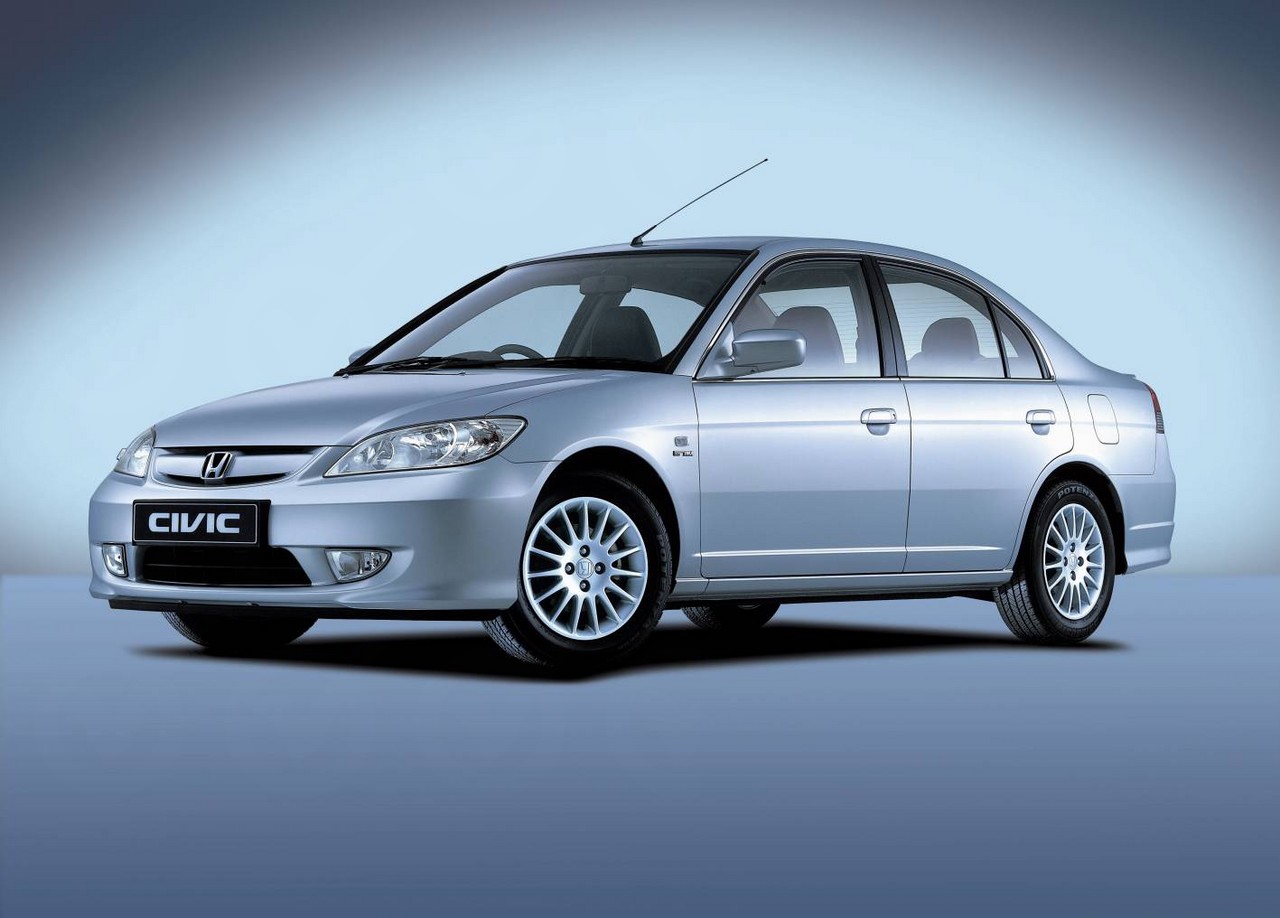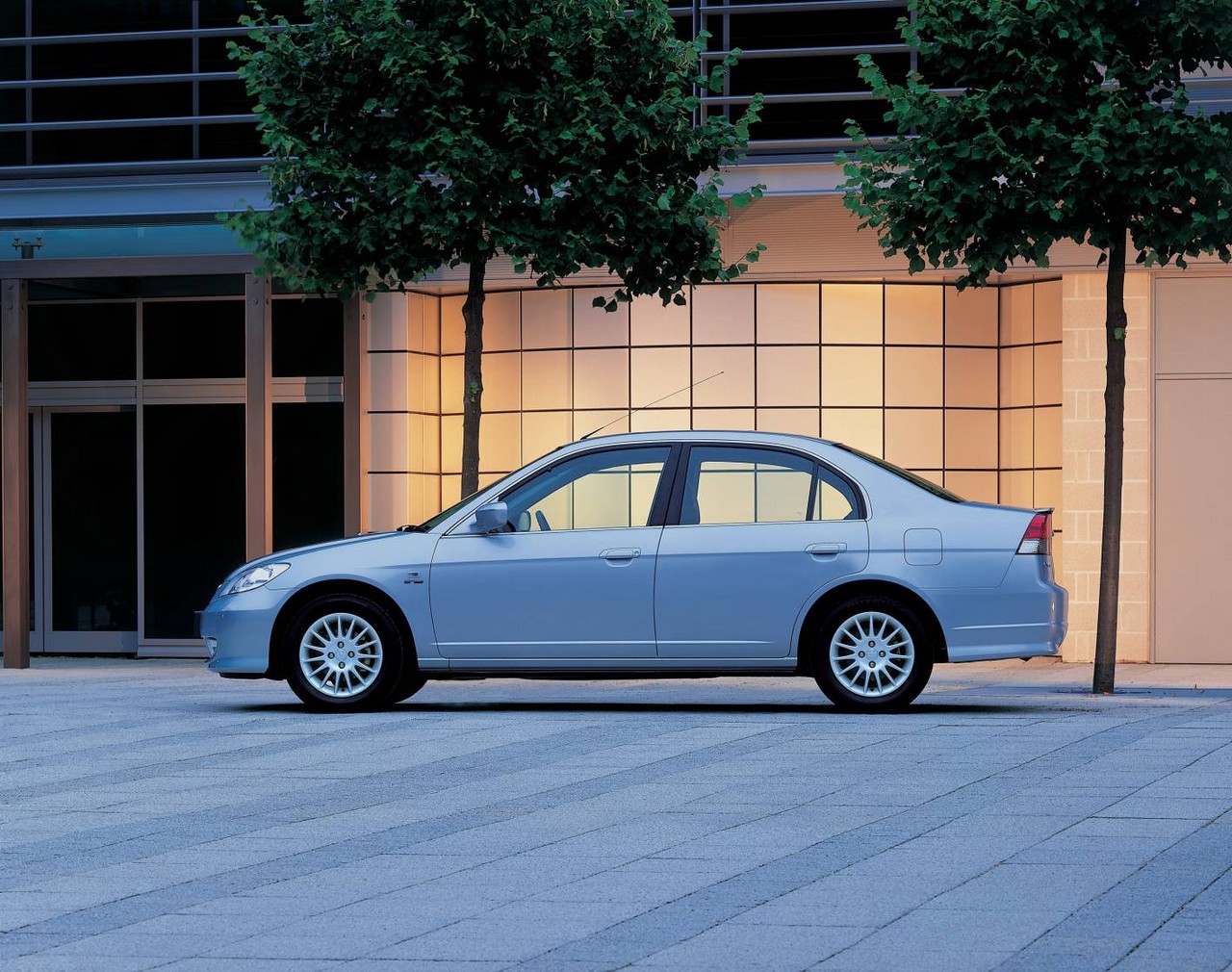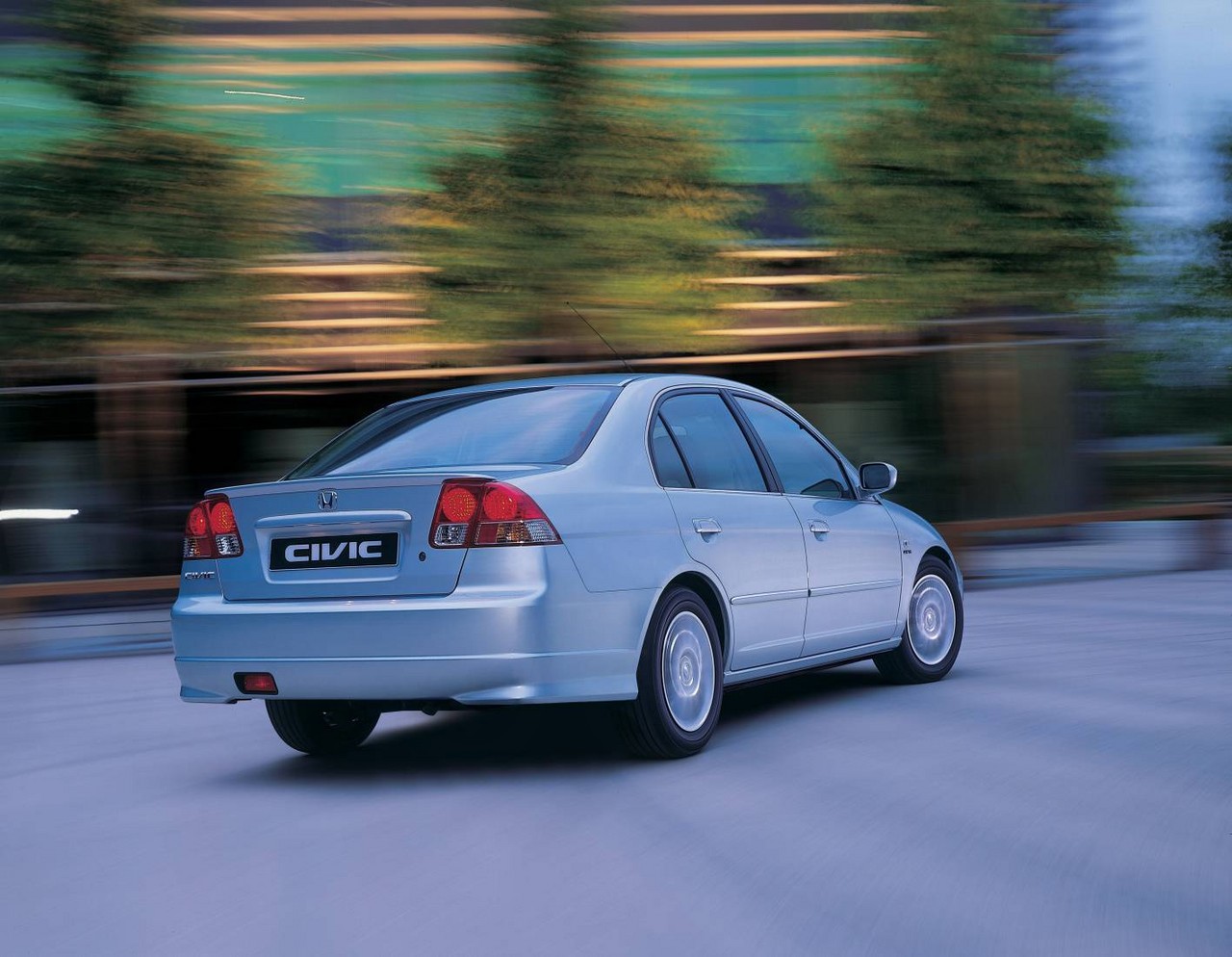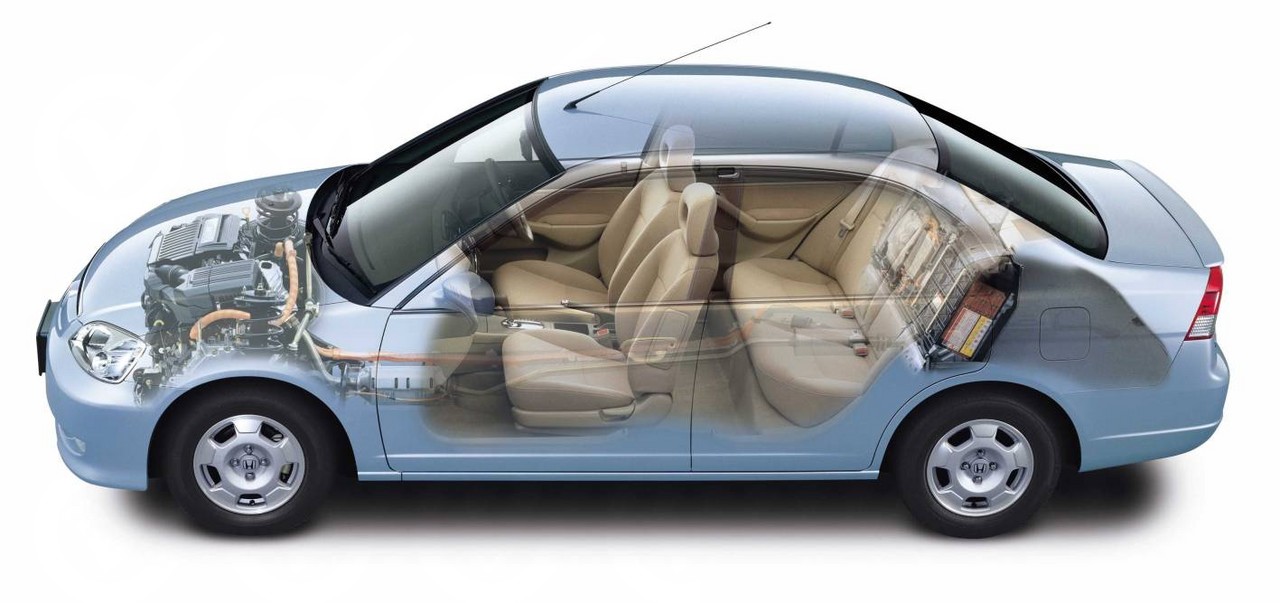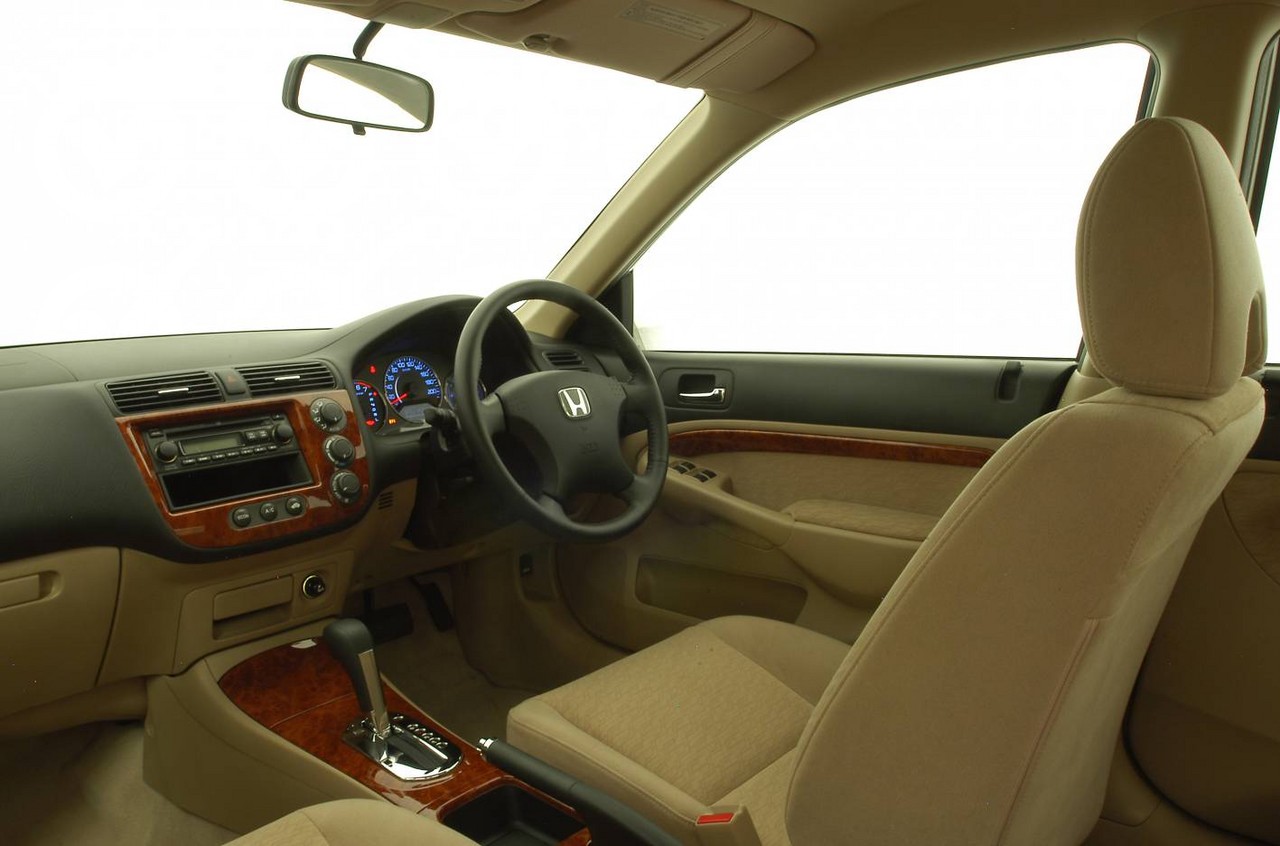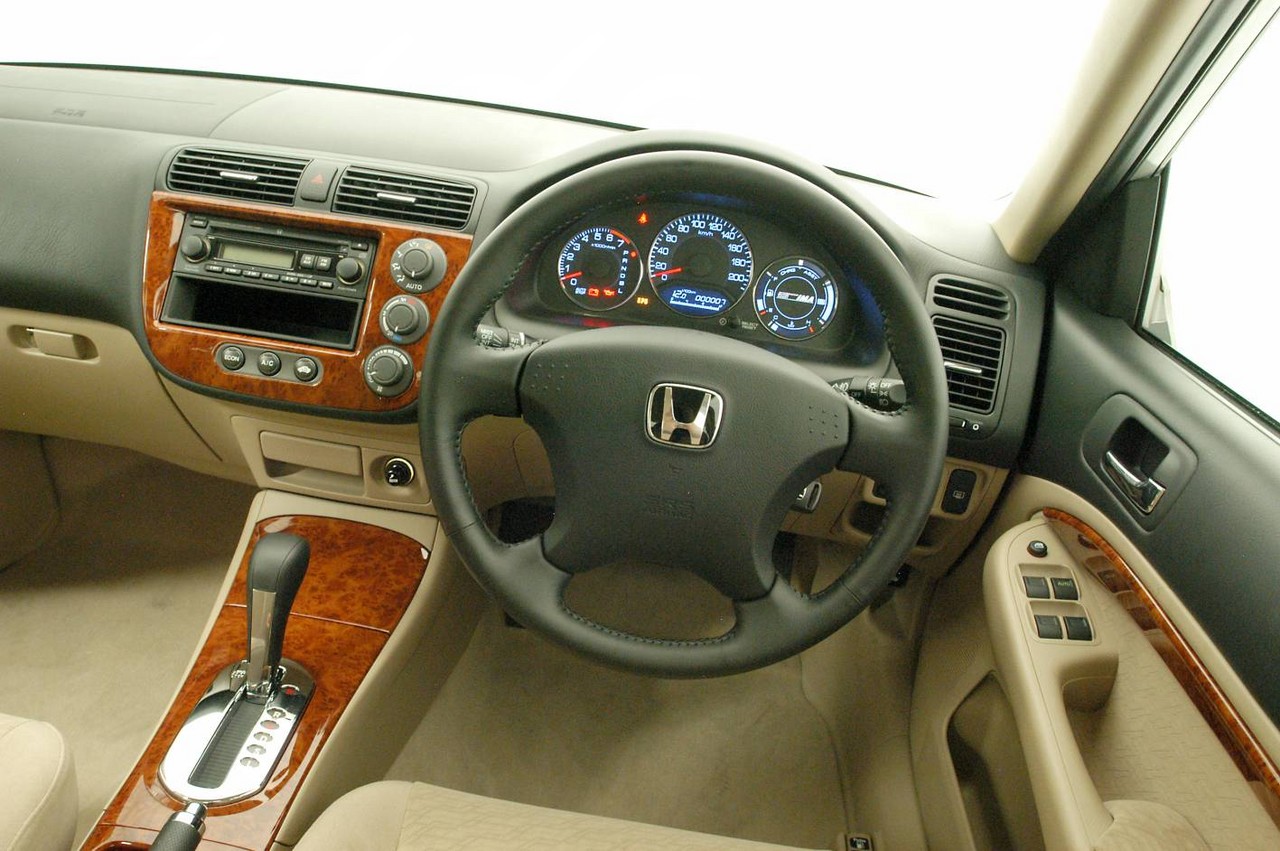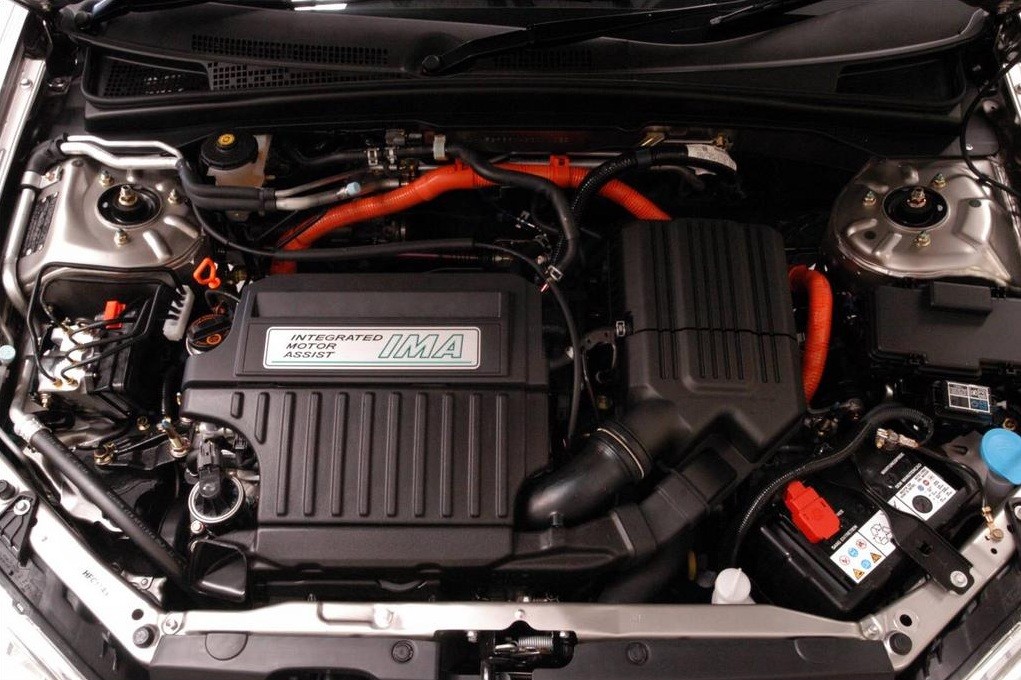
- Fuel-efficient drivetrain
- High standard of fit and finish
- Steering is light and accurate…
- … but lacks feel
- Firm seats lack support
- Underdamped suspension provides poor ride
- Batteries reduce boot space
- Air conditioning stops with engine
Overview
Released in March 2004, the Honda ES9 Civic Hybrid was a front-wheel drive sedan. Manufactured in Suzuka, Japan, the Civic Hybrid was powered by a 1.3-litre four-cylinder petrol engine and a 10 kW electric motor which was positioned between the engine and the continuously variable transmission.
LDA engine and electric motor
The 1.3-litre LDA ‘i-DSI’ four-cylinder engine had a single overhead camshaft, two valves per cylinder and featured:
- Lean-burn combustion which enabled it to operate at a 22:1 air-to-fuel ratio for more than 60 per cent of the time when driving on a flat road;
- ‘Idle stop’ which enabled the engine to automatically shut down when stationary in traffic and to restart when the driver removed their foot from the brake;
- Honda’s VTEC (Variable Valve Timing and Lift Electronic Control) system which provided the engine with camshaft profiles for low and high RPM operations; and,
- A cylinder cut-off system which close the valves and deactivate three of the four cylinders when the vehicle was decelerating (reducing power lost to the engine by 50 per cent).
The Civic Hybrid’s electric motor assisted the petrol engine under acceleration and would act as a generator to recharge the 144 volt nickel-metal hydride batteries when decelerating (i.e. regenerative braking). Unlike the corresponding Prius , however, the Civic Hybrid could not run in an electric-only drive mode. Over the combined ADR 81/02 cycle, the Civic Hybrid achieved fuel consumption of 5.2 litres per 100 km.
Dimensions and suspension
Compared to the ES1 Civic sedan on which it was based, the Civic Hybrid was 20 mm longer (at 4470 mm), the same width (1715 mm), 10 mm lower (1430 mm) and had the same length wheelbase (2620 mm). The hybrid drive train, however, contributed to a 120 kg increase in kerb mass, though aerodynamic enhancements reduced the coefficient of drag from 0.30 to 0.28 Cd. The Mk.7 Civic Hybrid had MacPherson strut front suspension and double wishbone rear suspension.
| Power source | Peak power | Peak torque |
|---|---|---|
| Petrol engine: 1.3-litre I4 | 63 kW at 5700 rpm | 119 Nm at 3300 rpm |
| Electric motor: 144 volt, nickel-metal hydride batteries | 10 kW at 1000 rpm | N/A |
| Combined | 69 kW at 5700 rpm | 146 Nm at 2000 rpm |
Safety equipment
Safety equipment for the ES9 Civic Hybrid included dual front airbags, front side airbags, ABS, electronic brake force distribution and front seatbelt pretensioners. The Hybrid was also fitted with rear drum brakes rather than the more powerful discs used on other Civic variants.
Features: Civic Hybrid
Standard features for the ES9 Civic Hybrid included 14-inch alloy wheels, a four speaker sound system with six-disc CD player, climate control air conditioning, front fog lamps, a leather-wrapped steering wheel, remote central locking, power mirrors, a tilt adjustable steering wheel and an immobiliser.
Related links
